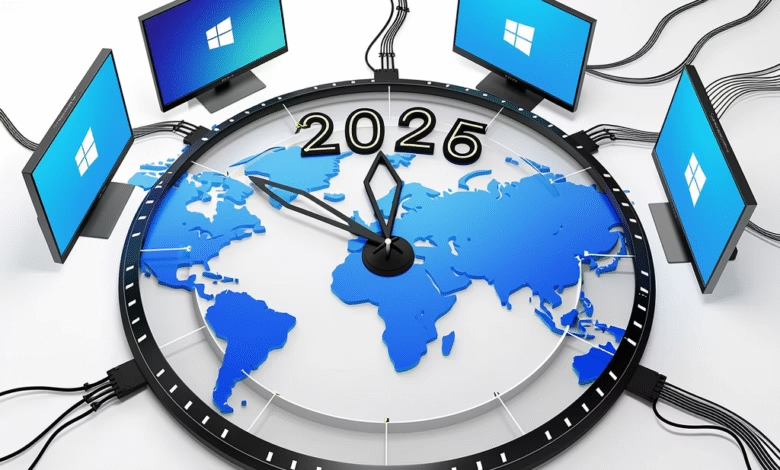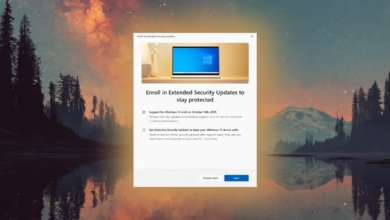Windows 11 Upgrade Challenges for Enterprises as Windows 10 Nears EOL

▼ Summary
– Enterprise readiness for Windows 11 has improved, but 50% of business-managed devices remain on Windows 10, per ControlUp’s report.
– Healthcare and finance sectors lag behind, with fewer than half of devices upgraded due to outdated hardware.
– The Americas are the slowest region to adopt Windows 11 (43% upgraded), despite most devices being technically capable.
– Larger organizations (10,000+ devices) have only completed 42% of migrations, hindered by complex environments and aging infrastructure.
– Microsoft offers paid Extended Security Updates for Windows 10 after support ends, while third-party providers like 0patch plan long-term security fixes.
Businesses face a race against time as Windows 10 approaches its end-of-life deadline, with adoption of Windows 11 progressing unevenly across industries and regions. A recent analysis reveals that while half of enterprise devices have now upgraded, significant gaps remain, particularly in sectors like healthcare and finance.
The latest data shows 50% of corporate Windows machines still run Windows 10, despite Microsoft’s October 2025 cutoff for security updates. While this marks improvement from last year’s 80% figure, the clock is ticking for organizations delaying migration.
Industry disparities highlight unique challenges. Education and technology firms lead the pack, with over 70% of systems already on Windows 11. In contrast, healthcare and financial institutions struggle, nearly one in five healthcare devices are too outdated to support the new OS without replacement.
Geography also plays a role. European enterprises outpace their American counterparts, with 70% of devices upgraded compared to just 43% in the Americas. Surprisingly, most lagging U.S. systems meet Windows 11’s technical requirements, suggesting hesitation rather than hardware limitations.
Larger corporations face additional hurdles. Companies managing 10,000+ devices have upgraded only 42%, slowed by complex IT environments and aging infrastructure.
For businesses still on Windows 10, experts recommend immediate action. Start by auditing hardware for compatibility with TPM 2.0 and Secure Boot requirements. Replace obsolete machines and schedule phased rollouts for the rest, prioritizing high-risk systems. Robust backups and up-to-date security patches are critical during transitions.
Organizations unable to meet the deadline have options, though none ideal. Microsoft’s Extended Security Updates (ESU) program offers paid support, while third-party providers like 0patch promise security patches for years beyond Microsoft’s cutoff. Neither solution is cost-effective long-term, making proactive upgrades the smarter play.
The message is clear: delaying Windows 11 adoption risks security and operational disruptions. With the deadline looming, businesses must weigh their options carefully, or pay the price later.
(Source: TechRadar)

